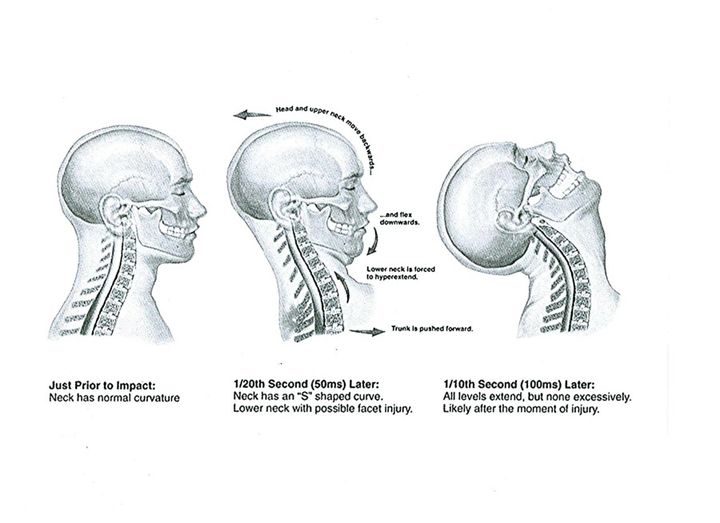
Kathleen, 53, never saw the other car coming.
How could she?
She was in her car, stationary, while she was waiting to make a right turn, when another car hit her from the back.
Her neck snapped forwards, jolting her head violently to the front, causing damage to both her ligament and muscles.
Though Kathleen didn’t suffer any life threatening injuries, she started to develop aches in her neck.
The course of the next 2 months would be a living hell.
Severe pains, constant headaches and dizziness at the slightest shift of her head… the pain was almost unbearable.
What Is Whiplash?

If you’ve been through the same ordeal as Kathleen, you’d know that she was suffering from a severe case of whiplash.
One of the most annoying and painful injuries that can happen to anyone in a car accident, whiplash is, contrary to popular belief, treatable by physiotherapy.
Indeed, according to certified Physiotherapists, whiplash is a common result of motor vehicle accidents, AND can be treated with the right directions, treatment and advice from certified Physiotherapists.
But what are the steps that should be taken to treat whiplash?
The first thing to do is to diagnose your symptoms.
The Symptoms Of Whiplash
In addition to the symptoms mentioned above, you might experience pain or numbness in your lower back, shoulder, arm, or even your hands.
Moreover, some might experience additional symptoms, such as:
- Blurred vision
- Ringing in the ears
- Irritability
- Memory or concentration problems
- Tiredness
- Sleeplessness
- Bruising, typically where your body is in contact with the seatbelt
The Different Categories Of Whiplash

According to the physiotherapists at PAR, individuals with whiplash can be classified into the following categories:
- WAD O-no pain or physical signs,
- WAD 1-individual complains of pain but there are no physical signs,
- WAD 2-individual complains of pain and there are physical signs such as loss of range,
- WAD 3-the above noted signs and symptoms including neurological signs such as weakness or decreased sensation,
- WAD 4-fracture or dislocation
The different categories help to determine the appropriate treatment for you, and helps the physiotherapist to understand and diagnose your illness better.
How Can Whiplash Be Treated?

While Kathleen’s case might differ from how you sustained your injury, the treatment method is typically the same.
According to the Physiotherapy Advanced Rehab clinic, the standard procedure is to assess your injuries, and then recommend a rehabilitation program that is suitable for your recovery.
For example, standard rehabilitation programs could include ice applications, an alternation between heat and ice, cervical support, gentle active movement, non-steroidal anti-inflammatory drugs, and muscle-relaxing medications.
Other types of treatment could be electrical stimulation, acupuncture, and specific types of physical exercises.
The Different Steps In Whiplash Treatment
The first step is to help your neck muscles to regain their strength and mobility back again.
Using physiotherapy, the healing process can be sped up, and recovery accentuated.
Moreover, physicians can add on further techniques to improve mobility to the spine itself and pain management techniques such as interferential current, ultrasound and TENS.
Massage therapy is also beneficial in management of whiplash to relax muscles that are now tense following the accident.
Some Notes Of Concerns
At the end of the day, it’s important to note that recovery is very subjective and unique to each individual.
One interesting thing to note, however, is the added benefits that physiotherapy gives you, and the speed of recovery it could potentially do for you.
After The Treatment...What’s Next?

So you went for your physiotherapy session the other day, and it’s still hurting! What’s wrong?
Well, it’s not that the session wasn’t beneficial - but it could be because your muscles are simply underused.
Studies show that more rest on injured muscles often results in more disability and pain, due to them being weak and stiff when they’re not being used.
That being said, you need to ensure that the muscles that were injured aren’t rendered useless in your daily routine.
Conclusion
The key to a successful recovery after a case of whiplash is not more rest, but rather the lack of it.
At the beginning, you should always consult the advice of a trusted physician, and get their take on how they would handle a recovery program of your unique situation.
After the treatment, however, it’s important to keep on moving, and keep those soft-tissues healthy and flexible, so that you heal faster in the process.
